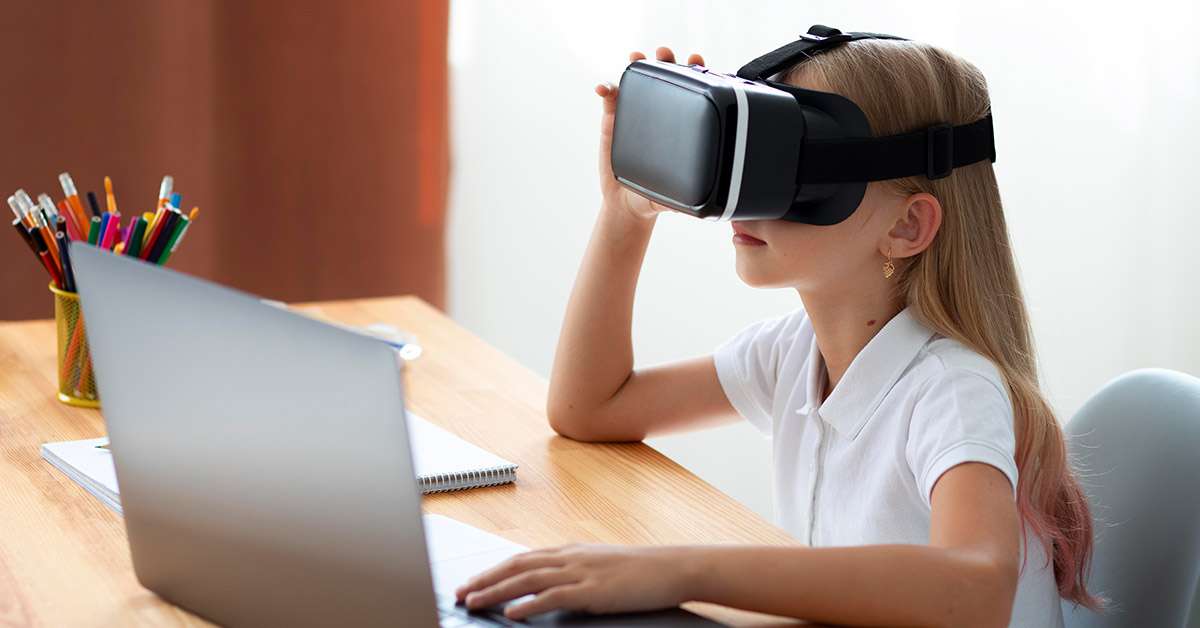Cutting-edge Techniques for Enhancing Technology Education in Today's Understanding Settings
Ingenious methods, such as hands-on discovering experiences and joint project-based efforts, play a crucial role in bridging theoretical concepts with functional applications. As we check out these techniques, it becomes imperative to think about exactly how personalized knowing can additionally improve the educational experience and foster a much deeper connection between trainees and modern technology.
Hands-On Learning Experiences
Hands-on knowing experiences work as a foundation in modern technology education and learning, effectively connecting the space in between academic understanding and functional application. These experiential tasks make it possible for pupils to involve directly with tools, software, and technology, fostering a deeper understanding of concepts that are frequently abstract in conventional classroom settings.
By incorporating hands-on knowing, educators can facilitate an environment where students can experiment, introduce, and troubleshoot. This strategy not just cultivates technical skills but also boosts analytical abilities, as students are urged to challenge real-world difficulties. Hands-on experiences frequently lead to increased pupil motivation and involvement, as students see the immediate importance of their research studies to sensible scenarios.
Additionally, such experiences can take various kinds, including laboratory experiments, simulations, and interactive jobs, every one of which deal with different understanding styles. The integration of hands-on discovering in technology education and learning likewise advertises retention of information, as pupils are most likely to bear in mind ideas they have actually actively functioned with instead of passively observed. Generally, hands-on experiences are important in preparing pupils for the complexities of the contemporary technical landscape, furnishing them with the skills and self-confidence required to succeed in their future jobs.
Collective Project-Based Understanding
Joint project-based discovering equips trainees to function together in groups to resolve complicated, real-world issues, cultivating important abilities for the modern-day workforce. This method urges energetic engagement, important reasoning, and creativity, as pupils bargain roles, share obligations, and jointly design solutions. By immersing themselves in jobs that show genuine obstacles, learners develop a deeper understanding of the subject while sharpening their ability to communicate and collaborate efficiently.
In innovation education and learning, joint project-based learning can materialize with interdisciplinary projects that incorporate elements of design, engineering, and coding. For example, pupils might collaborate to create a mobile application or layout a model that addresses a social concern, needing them to incorporate numerous technical principles and devices. This experiential learning not just improves technical effectiveness however also cultivates analytic abilities and versatility.
In addition, such collective endeavors promote a feeling of neighborhood among trainees, fostering social connections and a common commitment to their project outcomes. As they browse the complexities of synergy, trainees find out to appreciate varied point of views and utilize each other's toughness, preparing them for future expert settings where partnership is vital. Eventually, joint project-based discovering is a keystone of efficient modern technology education and learning.
Combination of Online Resources

The combination of online resources facilitates accessibility to current information and sector standards, which is important in a quickly developing technical landscape. By leveraging platforms such as MOOCs (Massive Open Online Courses) and specialized educational sites, instructors can supplement conventional educational programs with real-world applications, allowing students to engage with current patterns and practices.

Eventually, the thoughtful integration of on-line resources in technology education fosters an extra dynamic, interesting, and pertinent knowing experience, equipping pupils with the skills and knowledge essential to flourish in an increasingly electronic globe.
Gamification Techniques in Education And Learning
The consolidation of gamification strategies in education stands for a powerful approach to better engage pupils and improve their learning experiences. By integrating game-like elements such as factors, badges, and leaderboards into the educational program, educators can promote inspiration and promote a feeling of competition amongst learners. These methods urge involvement and persistence, particularly in topics that may otherwise show up daunting.
Gamification can take different kinds, including interactive tests, joint projects, and immersive simulations, which enable students to apply their expertise in practical contexts. This interactive technique not only makes learning satisfying but also strengthens vital concepts via repetition and instant responses. As pupils progress, they can track their accomplishments, advertising a development attitude and a feeling of more helpful hints success.
Moreover, gamification helps with distinguished direction by providing to varied learning styles and paces. Trainees are equipped to take possession of their discovering trip, permitting for a much more tailored educational experience. In an increasingly digital world, the use of gamification techniques can bridge the gap between conventional education and contemporary technological developments, eventually preparing trainees for future difficulties.
Personalized Knowing Approaches
Customized discovering methods are progressively recognized as vital for attending to the diverse needs and preferences of trainees in today's instructional landscape. These techniques encourage students by tailoring educational experiences to private interests, toughness, and finding out paces, consequently improving engagement and retention.
In technology education, individualized learning can take numerous types, including flexible discovering innovations, customized educational programs, and project-based discovering tailored to pupil rate of interests. Platforms that make use why not find out more of man-made intelligence can examine a student's efficiency data to recommend details resources or tasks that align with their understanding style.
In addition, individualized learning motivates pupil company, permitting learners to set objectives and choose pathways that reverberate with their goals (Education). This freedom cultivates a deeper link to the product, ultimately causing boosted results
Educators play a critical role in this procedure, using formative analyses to monitor development and change guideline accordingly. Collective devices and electronic portfolios can additionally help with tailored knowing, permitting pupils to show on their trips and showcase their success.
Final Thought
Finally, improving technology education in modern understanding environments necessitates the implementation of ingenious methods that focus on hands-on learning, collaborative projects, and the integration of online resources. Gamification techniques serve to increase engagement and motivation, while personalized learning methods accommodate private staminas and foster trainee company. Collectively, these techniques create a dynamic educational experience that prepares students for real-world obstacles and grows crucial abilities for directory future success in a quickly advancing technical landscape.
As we explore these methodologies, it comes to be vital to think about how personalized learning can better enhance the academic experience and foster a much deeper link between pupils and modern technology. The combination of hands-on knowing in modern technology education and learning likewise advertises retention of details, as trainees are more most likely to keep in mind principles they have actually actively worked with instead than passively observed.The incorporation of gamification strategies in education and learning represents an effective method to better engage students and improve their understanding experiences. Trainees are encouraged to take ownership of their understanding journey, permitting for a much more personalized academic experience.In conclusion, improving technology education in modern knowing atmospheres necessitates the application of cutting-edge techniques that focus on hands-on learning, collective projects, and the combination of on-line resources.